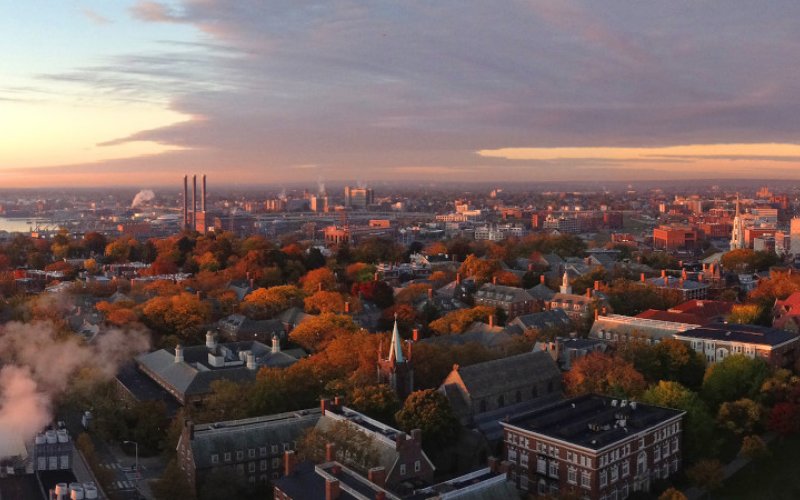
In 2008, Brown pledged to reduce its greenhouse gas (GHG) emissions from electricity production and campus fuel consumption by 42% below 2007 levels by 2020. With efficiency improvement to campus buildings, current emissions have dropped by 29.7% since 2007. With the renovation of the Central Heat Plant (CHP) and distribution loop through the Thermal Efficiency Project (TEP), approved and underway, Brown will reduce those emissions by an additional ~5,500 metric tons of carbon dioxide annually toward the goal of 42% reduction. The TEP also facilitates future decarbonization.
Brown began an extensive effort in 2019 to stimulate the production of zero carbon electricity in an amount equal to the electricity the University consumes. Electricity production accounts for about half of the emissions associated with direct campus activities. In early 2019, Brown signed two Power Purchase Agreements, one solar and one wind. In the first, Brown will purchase the output from a 240- acre solar panel field that will be newly constructed on a retiring gravel pit in Rhode Island. This will produce electricity equal to roughly 70% of the amount of electricity Brown consumes. In the second agreement, Brown will invest in development of a wind farm in Texas, which will produce an amount equivalent to the rest of Brown’s electric consumption.
In February 2019 President Paxson announced Brown’s new GHG reduction goals, reducing greenhouse gasses by 75% by 2025, and full net zero by 2040. The 2025 interim goal will be achieved primarily through renewable electricity Purchase Power Agreements and conversion of the CHP primary fuel from natural gas to a post-consumer bio-fuel. The Texas wind farm will be online in 2022. Planning and design for the conversion of the CHP fuel is underway. Research on potential fuels and proxy pricing is complete. Brown is reviewing regulatory requirements for use of alternate fuel(s) with existing boilers and storage tanks.
Achieving the remaining 25% reduction and the overall 2040 net zero goal requires modifying heating systems within several campus buildings and lowering the campus loop water system temperature to take advantage of non-combustion sources of heat that will eventually replace the conventional boilers at the Central Heat Plant.
Going forward:
Phase I: Renewable electricity PPA:
● Dry Bridge: Goldman Sachs (GS) filed petition with PUC, awaiting official filing. GS continues to move forward with the project and have expressed their commitment to deliver.
● (Proposed) Supplemental Small Virtual Net Metering PPA (RI-based) : after formally defining our ghg boundary, looking at capital projects planned to be online by 2025, and analysis showing a steady increase in electricity usage it was determined that we will need to continue to increase our PPA investments.
Phase II: ‘BioFuel Conversion’:
●Proposed renewable natural gas (RNG) RFP for the Central Heat Plant. Status: 5 proposals under review
Phase III: ‘Roadmap’:
● Building and loop modifications ensure adequate heat delivered using lower temp water.
● FM moving ahead ; developing and bundling initial project packages for FY21.
Phase IV:
● Switching from on site combustion of fuel to renewable electricity-powered heating to produce lower temp water.
